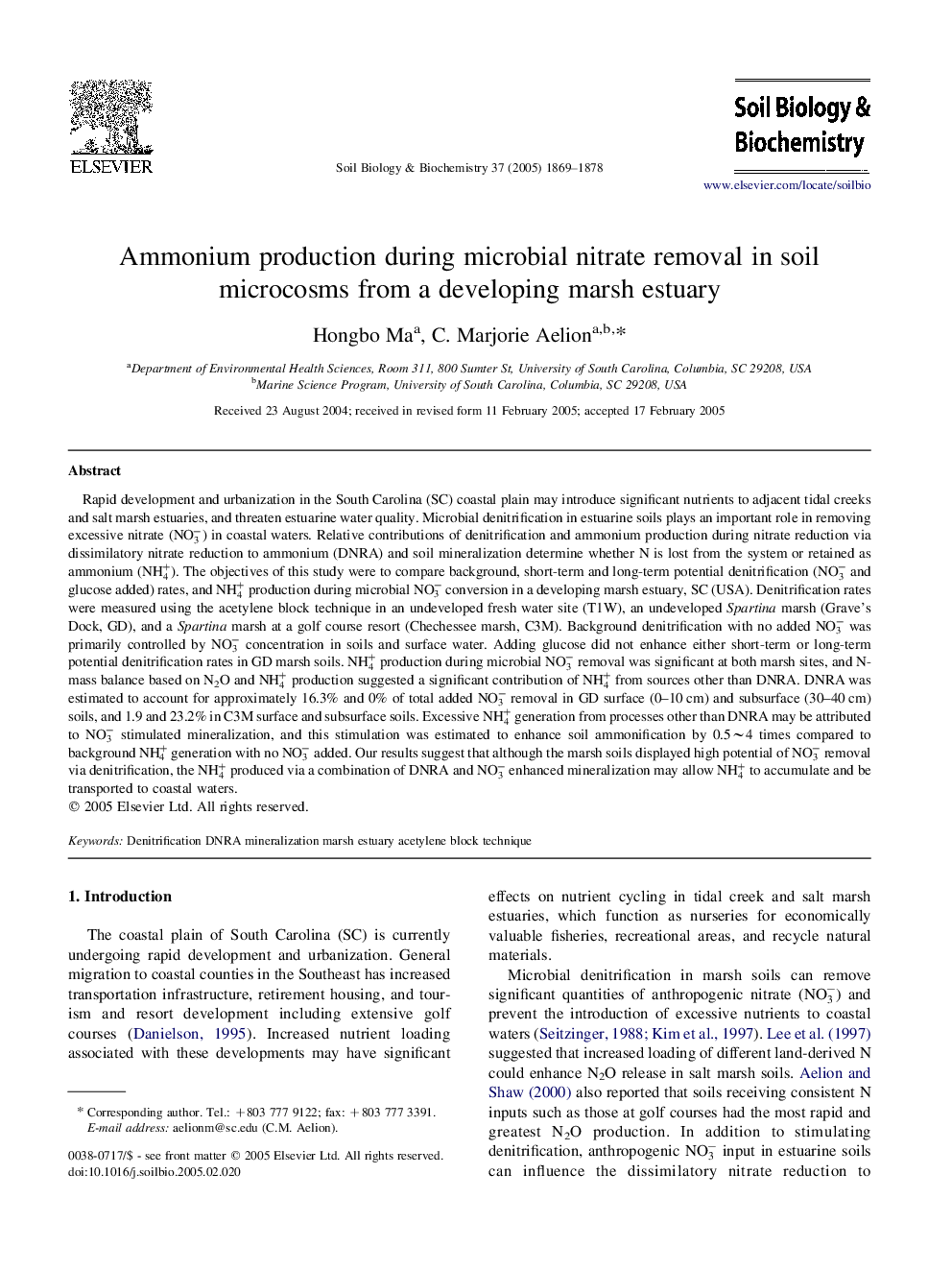| Article ID | Journal | Published Year | Pages | File Type |
|---|---|---|---|---|
| 10846263 | Soil Biology and Biochemistry | 2005 | 10 Pages |
Abstract
Rapid development and urbanization in the South Carolina (SC) coastal plain may introduce significant nutrients to adjacent tidal creeks and salt marsh estuaries, and threaten estuarine water quality. Microbial denitrification in estuarine soils plays an important role in removing excessive nitrate (NO3â) in coastal waters. Relative contributions of denitrification and ammonium production during nitrate reduction via dissimilatory nitrate reduction to ammonium (DNRA) and soil mineralization determine whether N is lost from the system or retained as ammonium (NH4+). The objectives of this study were to compare background, short-term and long-term potential denitrification (NO3â and glucose added) rates, and NH4+ production during microbial NO3â conversion in a developing marsh estuary, SC (USA). Denitrification rates were measured using the acetylene block technique in an undeveloped fresh water site (T1W), an undeveloped Spartina marsh (Grave's Dock, GD), and a Spartina marsh at a golf course resort (Chechessee marsh, C3M). Background denitrification with no added NO3â was primarily controlled by NO3â concentration in soils and surface water. Adding glucose did not enhance either short-term or long-term potential denitrification rates in GD marsh soils. NH4+ production during microbial NO3â removal was significant at both marsh sites, and N-mass balance based on N2O and NH4+ production suggested a significant contribution of NH4+ from sources other than DNRA. DNRA was estimated to account for approximately 16.3% and 0% of total added NO3â removal in GD surface (0-10Â cm) and subsurface (30-40Â cm) soils, and 1.9 and 23.2% in C3M surface and subsurface soils. Excessive NH4+ generation from processes other than DNRA may be attributed to NO3â stimulated mineralization, and this stimulation was estimated to enhance soil ammonification by 0.5â¼4 times compared to background NH4+ generation with no NO3â added. Our results suggest that although the marsh soils displayed high potential of NO3â removal via denitrification, the NH4+ produced via a combination of DNRA and NO3â enhanced mineralization may allow NH4+ to accumulate and be transported to coastal waters.
Related Topics
Life Sciences
Agricultural and Biological Sciences
Soil Science
Authors
Hongbo Ma, C. Marjorie Aelion,
